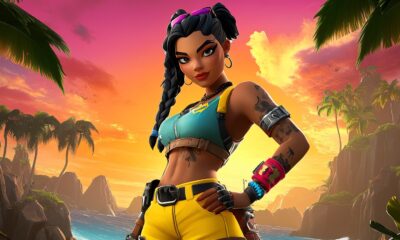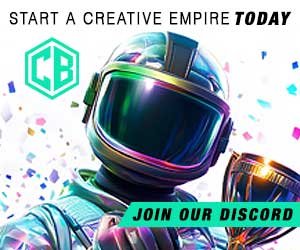All
Proven Strategies to Grow Your Ideal Player Base in UEFN and Fortnite Creative
Learn how to identify your ideal audience and create long-lasting player engagement in Fortnite Creative and UEFN.
Build communities by aligning your game design with your strengths and passion.

Creating a thriving player base in Unreal Editor for Fortnite (UEFN) and Fortnite Creative requires a strategic approach that aligns your game development with your passions and expertise. By focusing on your strengths and understanding your target audience, you can build engaging experiences that foster long-term community engagement.
Develop UEFN and Fortnite Creative Games Aligned with Your Interests and Skills
Begin by identifying the genres and game mechanics you are passionate about and excel in. Designing within your zone of interest not only makes development more enjoyable but also allows you to bring genuine expertise and creativity to the experience. For example, if you enjoy competitive gaming, consider designing maps or modes that emphasize skill-based challenges, leaderboards, or time trials to attract a competitive audience. Similarly, if you love storytelling, narrative-driven adventures or escape rooms might resonate more with your strengths.
This alignment ensures authenticity and resonates with players who share similar interests. Passionate developers create passionate games, and players can feel that energy. When you’re invested in the genre or gameplay style you’re building for, you’re more likely to create unique mechanics, provide frequent updates, and maintain enthusiasm through challenges—factors that are all critical for cultivating a loyal and engaged player base.
Do’s and Don’ts When Building a Player Base in UEFN and Fortnite Creative
Do’s:
- Engage with the Community: Actively participate in Fortnite Creative forums and social media groups to gather feedback and understand player preferences.
- Collaborate with Influencers: Partner with streamers and content creators who specialize in Fortnite to showcase your creations, increasing visibility.
- Iterate Based on Feedback: Continuously update your game based on player input to improve gameplay and show that you value their opinions.
- Follow Fortnite Creator Rules: Adhering to Epic Games’ guidelines ensures your map remains eligible for discovery and monetization, helping maintain visibility and trust with your player base. Consistent compliance also prevents potential takedowns, supporting long-term growth and community sustainability.
Don’ts:
- Avoid Overcomplicating Mechanics: Keep gameplay mechanics intuitive to ensure accessibility for a broader audience.
- Don’t Ignore Analytics: Utilize available data to understand player behavior and refine your game accordingly.
- Avoid Neglecting Marketing: Even a well-designed game needs promotion; neglecting this can lead to low player engagement.
- Don’t Create Solely for Money: Designing maps purely to chase monetization often results in low-quality or uninspired gameplay. Players can sense when passion is missing, and without genuine engagement or fun, it’s difficult to build loyalty or spark organic growth in your community.
Building Player Base Longevity in UEFN and Fortnite Creative
To cultivate a lasting community around your games, consider the following strategies:
- Consistent Content Updates: Regularly introduce new features, challenges, or events to keep the game fresh and players engaged.
- Foster a Positive Community: Encourage respectful interactions among players and address toxic behavior promptly to maintain a welcoming environment.
- Reward Loyalty: Implement systems that recognize and reward long-term players, such as exclusive in-game recognition or surprise giveaways.
Case Studies of Successful Community Building in Game Development
Several game studios have successfully built and maintained robust player communities:
- Epic Games with Fortnite: By continuously engaging players through live events, in-game updates, and social media interactions, Epic Games has created a vibrant community. The game’s frequent updates not only keep the content fresh but also create anticipation among players, turning them into eager participants in the game’s evolving narrative.
- Oddworld Inhabitants: This studio leveraged social networking to involve fans directly in the development process, allowing them to contribute to decision-making and fostering a sense of ownership within the community.
- DreamCraft (Adopt Me! on Roblox): The creators of Adopt Me! on Roblox, DreamCraft, built one of the most-played user-generated games by focusing heavily on their core audience—young, casual gamers who enjoy social play and collecting. They maintained a thriving player base through consistent weekly updates, seasonal events, and deep community engagement via social media and Discord. Their success showcases the power of regular content drops and listening to fan feedback to refine in-game experiences.
By focusing on your passions, engaging with the community, and learning from successful studios, you can create compelling experiences in UEFN and Fortnite Creative that attract and retain a dedicated player base.
Want to connect with other creators and get personalized feedback?
Join our Discord Community where we dive deeper into building successful player bases in UEFN and Fortnite Creative, share insights, and help each other grow!
All
Unexpected Challenges in Game Development: Practical Lessons for Developers
Discover unexpected challenges in game development, how top developers overcame them, and key lessons to help you navigate your own projects.
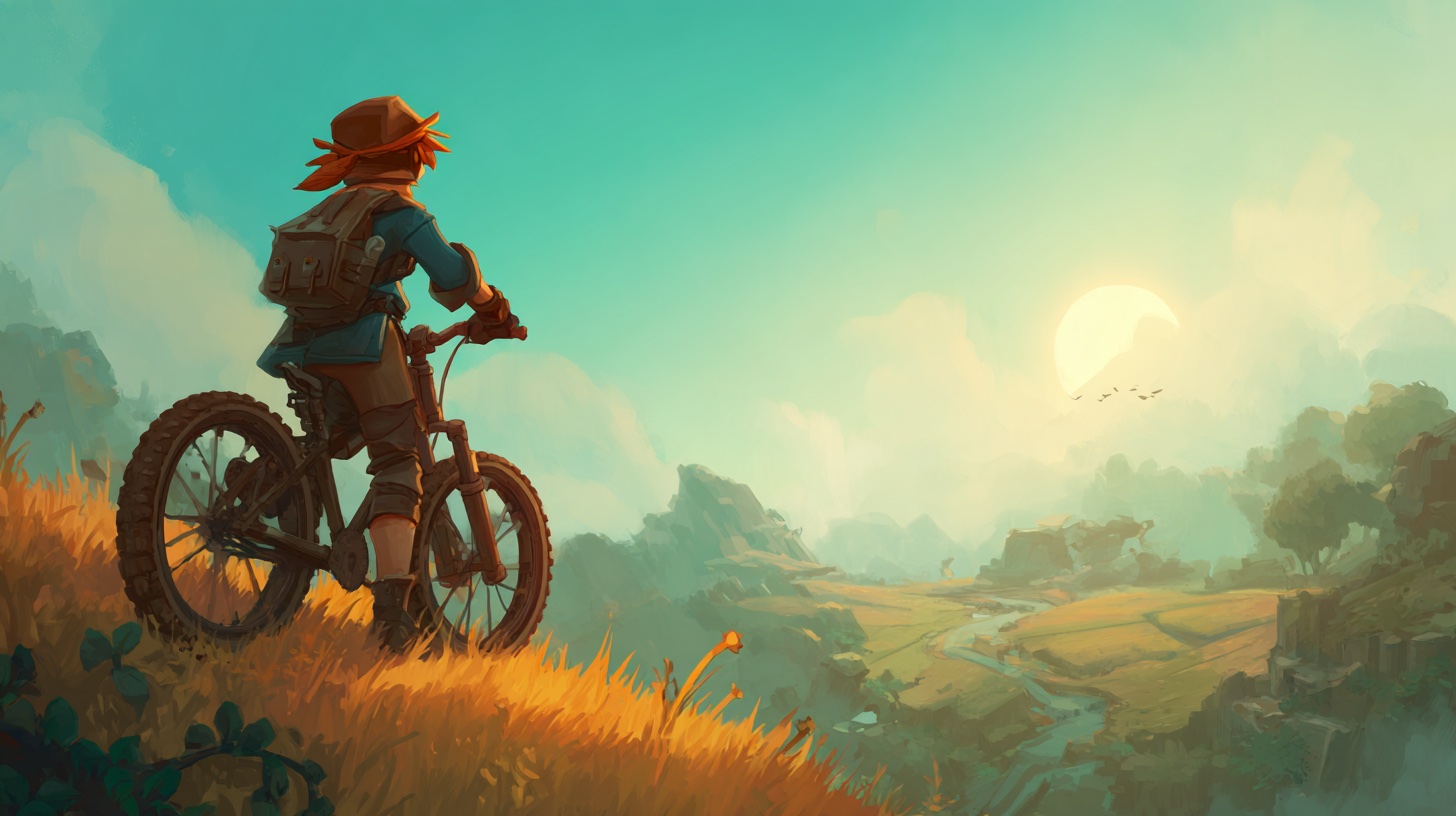
Game development is rarely a smooth journey. While most developers expect technical hurdles, some of the most impactful lessons come from unexpected challenges that test creativity, resilience, and adaptability. By learning from the experiences of seasoned professionals, both new and experienced developers can better prepare for the unpredictable nature of the industry.
In this article, we’ve gathered insights by asking game developers and established thought leaders in the industry: What’s one unexpected challenge you faced during game development that taught you a valuable lesson? How did you overcome it and what would you recommend to other developers? Their experiences shed light on how setbacks can transform into valuable growth opportunities.
The Nature of Unexpected Challenges in Game Development
Unexpected challenges in game development come in many forms — technical difficulties, creative misalignment, production bottlenecks, and even psychological roadblocks. These hurdles highlight the importance of problem-solving and adaptability. As seen in countless postmortems on TheCreativeBlok.com, successful developers aren’t defined by avoiding challenges, but by how they respond to them.
Lessons from the Field – Developer Perspectives
1. Reframing Setbacks as Opportunities
“One of the most unexpected challenges I faced wasn’t technical but psychological – dealing with self-doubt after losing my position at an established agency. Rather than viewing this setback as a failure, I made a conscious decision to reframe it as an opportunity to pursue new directions in my career. This mindset shift led me to secure a consultancy role on Tomb Raider, which became a pivotal moment in my professional journey. The experience taught me that resilience and perspective are just as important as technical skills in our industry. For other developers facing similar challenges, I would suggest viewing setbacks not as endpoints but as potential redirections that might lead to even more fulfilling opportunities in your career path.”
— JM Littman, CEO, Webheads
Takeaway: Psychological resilience is just as critical as technical expertise. Developers should embrace setbacks as opportunities to pivot and grow.
This highlights the importance of mindset in a developer’s journey. Instead of seeing job loss as the end, reframing it as an opportunity created space for new directions and growth. The lesson is clear: setbacks can often be the start of something better when approached with resilience and openness to change.
2. Balancing Quality and Performance Across Devices in Game Development
“During game development, an unexpected challenge I faced was optimizing performance for a mobile game with high-quality graphics. The game worked perfectly on high-end devices, but players with older models experienced significant lag. It was a huge issue, as we had a wide target audience. The lesson I learned was the importance of balancing quality and performance early in the development process. I had to go back and optimize our assets, reduce texture sizes, and implement more efficient coding for rendering. I also used a feature to dynamically adjust graphics based on the device’s capability. My recommendation to other developers is to test performance regularly on a range of devices, not just the latest models. Addressing performance issues early can save a lot of time and frustration later, ensuring a smoother experience for all users.”
— Nikita Sherbina, Co-Founder & CEO, AIScreen
Takeaway: Always design with performance in mind. Testing across diverse hardware ensures accessibility and a smoother user experience.
Performance should never be an afterthought. Test early and across a wide range of devices. Striking the right balance between quality and performance ensures your game is accessible to the widest possible audience.
3. Aligning Creative Vision with Technical Capabilities in Game Development
“A common challenge in game development is misalignment between the creative vision and technical capabilities, leading to unrealistic expectations and complicated mechanics. To address this, clear communication between creative and technical teams is essential. Regular check-ins and collaboration foster mutual understanding of the project’s vision and scope, minimizing roadblocks and delays, and ultimately leading to a more cohesive final product.”
— Mohammed Kamal, Business Development Manager, Olavivo
Takeaway: Strong collaboration between creative and technical teams prevents wasted effort and ensures realistic, achievable goals.
Communication is essential. Encourage collaboration between creative and technical roles from the start. This prevents wasted time and ensures the final product matches both the vision and the technical realities.
4. Overcoming the Marketing Challenge in Game Development
“A major challenge I faced was understanding how to market my game. Publishing and Marketing is just as expensive, and just as much work, as building the game itself. I learned that multiple people can go a lot farther than one person alone. I closely partnered with a social media influencer, who is now primarily responsible for marketing the game. By making this person a partner they share in the rewards if the game does well, so it’s in their own best interest to market it well. Not only does this save me potentially huge costs and time, but also provides me with an established audience of fans, and a clear direction of who I am building the game for. My recommendation for other developers is to find a creative partnership to handle the side of business that you aren’t as good at, while you get to focus more on what you do best: making a great game.”
— Aaron Hibberd, Game Developer, Hibby Games
Takeaway: Marketing is a critical part of game development. Building partnerships can expand reach while letting developers focus on game creation.
Marketing is as important as development. If it isn’t your strength, seek partners or collaborators who can bring your game to the right audience while you focus on building it. You can also join developer communities that provide networking opportunities, free or discounted promotion, and chances for community gameplay exposure.
Common Themes Across These Challenges
Across these diverse experiences, several themes emerge:
- Resilience: Psychological strength helps developers push through uncertainty.
- Optimization: Balancing graphics and performance is crucial for accessibility.
- Communication: Creative and technical alignment minimizes costly missteps.
- Collaboration: Partnerships expand skills and reach beyond a single developer’s capabilities.
These lessons mirror strategies often highlighted in postmortems shared on Game Developer, where adaptability, teamwork, and forward planning prove to be essential ingredients for success.
Recommendations for Game Developers
- Adopt Agile Workflows – Iterative development makes it easier to pivot when challenges arise. See our guide explaining: Project Management Methodologies for UEFN Game Development.
- Test Early and Often – Especially across a wide range of devices, ensuring your game reaches its intended audience.
- Prioritize Communication – Set up regular check-ins between creative and technical teams to avoid misalignment.
- Seek Partnerships – Don’t hesitate to collaborate with influencers, marketers, or consultants who complement your skills.
Turning Challenges into Growth in Game Development
Unexpected challenges in game development are inevitable. Whether it’s psychological hurdles, performance optimization, team misalignment, or marketing struggles, each obstacle holds the potential to teach valuable lessons. By reframing setbacks, prioritizing communication, and collaborating with others, developers can transform challenges into opportunities for growth.
What unexpected challenges have you faced in your game development journey? Share your experiences with us in the comments or join the conversation in our Discord :
The Creative Blok Discord
All
Unlock the Power of TikTok Effect House: Create Viral AR Effects and Get Paid

TikTok isn’t just a platform for viral dances and lip-syncs—it’s now a serious launchpad for digital creators, designers, and tech-savvy artists. One of the most exciting ways to break into TikTok’s creator economy is through Effect House, TikTok’s augmented reality (AR) development platform. If you’re a 3D designer, animator, or simply passionate about creative tech, TikTok Effect House offers a way to build interactive effects, reach millions, and even make money doing it.
What Is TikTok Effect House?
Effect House is TikTok’s official AR platform that lets creators design and publish interactive effects (also called AR filters) for TikTok videos. Think of those face filters, green-screen backgrounds, games, or immersive visual effects you see on trending videos—most of them come from Effect House creators.
Launched publicly in 2022, Effect House democratized AR creation by offering intuitive tools, tutorials, templates, and a community hub. It allows anyone from hobbyists to professional 3D artists to publish their effects directly on TikTok and gain visibility.
TikTok Effect House Audience Reach & Metrics
- Over 1 billion monthly active users on TikTok globally.
- TikTok effects using Effect House tools have powered billions of video views.
- Top effects can gain millions of uses within days of going viral.
- More than 2 million creators have joined the Effect House platform since its public release.
With that kind of exposure, becoming an Effect House creator is a golden opportunity to build your personal brand, enhance your portfolio, and tap into new income streams.
How Much Can You Earn With TikTok Effect House?
TikTok launched an Effect Creator Rewards Program in 2023, allowing creators to monetize popular effects. Here’s what you need to know:
Earnings Potential:
- TikTok pays up to $700 per effect that reaches 500,000 unique video publishes in 90 days.
- For every additional 100,000 video publishes, creators can earn up to $140 extra, capped at $14,000 per effect.
- Some top creators reportedly earn $2,000–$10,000+ per month by developing a portfolio of high-performing effects.
🔍 Note: The rewards depend on unique video uses, not views. You’ll earn more as more TikTok users apply your effect in their own content.
How to Become a TikTok Effect House Creator
Ready to dive in? Follow these steps to get started with TikTok Effect House and start creating:
1. Download and Install Effect House
- Visit: https://effecthouse.tiktok.com
- Compatible with macOS and Windows.
- Minimum system requirements are listed on the site—make sure your computer supports 3D rendering and AR development.
2. Create a TikTok Account
- You need a TikTok account to link with Effect House.
- For best results, create a professional username that aligns with your creative identity.
3. Learn the Tools
Effect House includes:
- A node-based scripting system (similar to Spark AR or Lens Studio).
- 3D face tracking, segmentation, interaction triggers, and custom assets.
- Access beginner-friendly tutorials in the Learning Hub to get started.
4. Build Your First Effect
- Use templates or create from scratch.
- Keep effects interactive, shareable, and trend-relevant to boost adoption.
- Test your effect using TikTok’s preview feature.
5. Submit for Review
- All effects must pass TikTok’s content and safety review before going live.
- Approval typically takes 1–3 days. If longer, contact support.
6. Publish and Promote
- Share the effect’s link in your bio, on other platforms, or embed it in TikTok videos.
- Use popular hashtags and collaborate with creators to go viral.
7. Join the Rewards Program
- Once eligible, apply to TikTok’s Effect Creator Rewards Program in your dashboard.
- Continue to create effects regularly
- Track your performance and earnings through the Effect House portal.
Pro Tips to Maximize Your Success
- Ride trends: Sync your effects with trending TikTok sounds or challenges.
- Keep it fun and simple: The most viral effects are often easy to use and visually striking.
- Optimize performance: Keep file sizes light to ensure effects work on a wide range of devices.
- Engage with your community: Respond to users, encourage shares, and iterate based on feedback.
- Connect and network with Tik Tok Creators who like to feature effects.
- Participate in Tik Tok Effect House Contests, Competitions and Giveaways
- Use analytics: Monitor how many people are using your effect and tweak accordingly.
Being a TikTok Effect Creator can Open Doors
Becoming a TikTok Effect House creator opens the door to global visibility, creative expression, and real income. It doesn’t matter if you’re a seasoned 3D designer or a curious beginner, TikTok offers you the platform, tools, and rewards to turn your creativity into impact—and profit.
With millions of users looking for the next cool effect to spice up their content, now is the perfect time to join Effect House and start building.
All
UEFN & Fortnite Creative: Game Project Management Methodologies Explained
Learn Agile, Waterfall, and Hybrid project management methodologies for UEFN and Fortnite Creative. Discover how to choose the right one for your game development project.

Managing a UEFN (Unreal Editor for Fortnite) or Fortnite Creative project successfully requires more than just creative ideas—it demands a structured methodology. If you’re developing a simple mini-game or a complex adventure mode, project management methodologies help you stay on track, meet deadlines, and iterate efficiently. This article explores Agile, Waterfall, and Hybrid models, offers practical advice for choosing the best approach, and provides sample project charts using an adventure game as a case study.
Understanding and applying the right project management approach is particularly important in collaborative environments like UEFN, where multiple creators often work together across disciplines. Choosing the right method enables teams to minimize rework, streamline testing and iteration, and deliver polished and engaging content that aligns with player expectations.
What Are Project Management Methodologies in Game Development?
Project management methodologies are structured frameworks that help teams plan, execute, and manage game projects from concept to launch. They define workflows, communication styles, deliverables, and milestones.
In the context of Fortnite Creative and UEFN, these methodologies help:
- Coordinate level designers, scripters, and asset creators
- Organize timelines and iteration loops
- Integrate playtesting and community feedback
By aligning development workflows with a proven methodology, creators can better manage complexity, reduce risk, and accelerate delivery. Each methodology brings a unique set of practices tailored to different project types and team dynamics.
Project Management Methodologies for UEFN and Fortnite Creative Projects: Choosing and Using the Right One
Methodology 1: Agile Game Development
Overview
Agile emphasizes iteration, adaptability, and feedback. Teams work in short cycles (sprints) with frequent evaluations. It’s based on the principles of the Agile Manifesto, focusing on individuals and interactions, working software, customer collaboration, and responding to change. In game development, Agile is popular because it facilitates fast iteration and user-centered design, allowing teams to pivot quickly based on feedback.
Agile empowers teams to tackle uncertainty and creative challenges by breaking projects into manageable components. In UEFN, where gameplay ideas often evolve mid-development, Agile enables teams to validate ideas rapidly through prototyping and playtesting.
Key Concepts
- Iterations (Sprints): 1–4 week cycles
- Scrum Roles: Product Owner, Scrum Master, Team
- Ceremonies: Sprint Planning, Daily Stand-ups, Sprint Review, Retrospective
- Kanban Boards: Visual task tracking
Advantages
- Frequent playtesting and improvements
- Flexibility to adapt to creative changes
- Fast feedback loop from players or stakeholders
- Empowered, cross-functional teams with shared ownership of deliverables
Challenges
- Requires discipline to avoid feature creep
- Difficult to track overall progress without metrics
- Risk of inconsistent design if not managed carefully
- Less emphasis on documentation may create gaps in knowledge retention
Tools for Agile in UEFN
- Trello, Jira, Notion, Codecks, Asana
“Agile methodologies have become the de-facto standard in game development due to their adaptability and player-centric focus.” — Agile Game Development by Alistair Cockburn
Methodology 2: Waterfall
Overview
Waterfall is a linear, structured approach where each phase (Design, Development, Testing) must be completed before the next. It emphasizes comprehensive documentation, strict timelines, and predetermined deliverables. While less flexible than Agile, Waterfall provides strong clarity and control—making it useful for tightly scoped or publisher-driven projects.
In Fortnite Creative, Waterfall can work well for clearly defined experiences like a single-player narrative game, where all gameplay, art, and scripting elements are established upfront and changes during development are minimal.
Best For:
- Projects with fixed scope and requirements
- Short narrative experiences with predictable development
- Teams requiring well-documented workflows and approval checkpoints
Advantages
- Clear documentation and planning
- Straightforward milestone tracking
- Easier budget estimation
- Ideal for asset pipelines where detailed specs are fixed
Limitations
- Hard to adapt to feedback
- Risk of wasting time on early decisions that later prove faulty
- Limited flexibility for live updates or community-driven features
- Can delay valuable feedback until late stages of development
Methodology 3: Hybrid Models
Overview
Hybrid models, as stated in: Hybrid Game Development Models by Sarah Lee, combine the predictability of Waterfall with the adaptability of Agile. This approach acknowledges that no single methodology fits all projects and blends elements to suit the team’s strengths, goals, and constraints. It’s especially effective in game development, where some features require flexibility (game mechanics) while others need predictability (cutscenes, localization).
Hybrid approaches are particularly useful in UEFN projects that balance creative experimentation with structured milestones, such as large collaborative adventure games that require both artistic freedom and technical checkpoints.
Examples
- Agile-Waterfall: Waterfall for planning; Agile for execution
- Iterative-Incremental: Gradual build-up with cycles
- Lean-Agile: Reduces waste; maximizes feature value
- Kanban-Scrum: Combines visual flow with sprint planning
Use Cases in Fortnite Creative
- Adventure maps with clear start-to-finish gameplay but evolving mechanics
- PvP arenas that need user feedback-driven balance updates
- Story-driven experiences where planning and iteration go hand-in-hand
How to Choose the Best Methodology for Your UEFN Project
1. Define Your Scope
- Linear story? Waterfall may suffice.
- Open-world exploration or dynamic gameplay? Consider Agile or Hybrid.
When evaluating scope, ask whether your game will evolve based on playtesting and feedback or follow a well-established vision from day one. This will influence how much flexibility your chosen methodology needs to support.
2. Team Size and Experience
- Solo developer: Kanban or Agile with light documentation
- Small team: Scrum with clear roles and stand-ups
- Larger teams: Hybrid model to separate design and development phases
Smaller teams benefit from the simplicity and adaptability of Agile, while larger teams may require hybrid structures to manage complexity and synchronize work across departments.
3. Community Engagement
- If community feedback is central, Agile is ideal.
- If you’re under a tight launch schedule, Waterfall may provide better predictability.
High levels of engagement from your player base mean your game must evolve quickly. Agile and hybrid approaches allow you to incorporate that feedback rapidly and effectively.
Sample Implementation: Adventure Game Project
Example 1: Agile Sprint Plan for UEFN Adventure Game
This example shows how Agile allows for fast prototyping and iteration, helping teams identify what works through hands-on testing and direct user feedback.
Sprint 1: Core Mechanics Prototype
- Task 1: Movement System
- Task 2: Quest Trigger System
- Task 3: Dialogue System
Sprint 2: First Playable Map
- Task 1: Level 1 Terrain Design
- Task 2: Key Item Integration
- Task 3: NPC Placement
Sprint 3: Player Feedback Loop
- Task 1: Collect playtest feedback
- Task 2: Adjust NPC behavior
- Task 3: Add new puzzles
Example 2: Waterfall Plan for the Same Game
This structure works best when all systems and design choices are known upfront. Each stage leads directly to the next, with limited room for experimentation.
Phase 1: Design
- Concept doc
- GDD
- Level flowchart
Phase 2: Development
- Implement mechanics
- Script events
- Import assets
Phase 3: Testing & Polish
- Playtesting
- Bug fixing
- Final optimization
Example 3: Agile-Waterfall Hybrid Gantt Chart
A hybrid timeline offers structured pre-production and release phases while leveraging iterative cycles during the most creatively volatile parts of development.
Month 1: Planning (Waterfall)
- Finalize GDD and asset list
Months 2–3: Agile Execution
- 4 Sprints (level design, mechanics, testing, story layering)
Month 4: Final Polishing (Waterfall)
- Lock content
- Bug squashing
- Final publish to UEFN
Tips for Successful Implementation
- Use tools like Asana, Notion or Jira for structured task management
- Document key learnings from each sprint
- Create a Feature Prioritization Matrix
What Is a Feature Prioritization Matrix?
A Feature Prioritization Matrix is a visual tool used to evaluate and rank game features based on key criteria such as player impact, development effort, implementation risk, and overall value to the experience. This matrix helps UEFN creators and teams make data-informed decisions about which features to focus on during development sprints or planning phases.
Here’s a simple example:
| Feature | Player Impact | Dev Effort | Risk | Priority |
|---|---|---|---|---|
| Core movement system | High | Medium | Low | High |
| Decorative assets | Low | High | Low | Low |
| Boss encounter system | High | High | High | Medium |
| Multiplayer scoreboard | Medium | Medium | Medium | Medium |
This matrix empowers creators to balance gameplay quality with resource limitations, ensuring the most impactful features are delivered first. For solo or indie devs, it’s an effective way to prevent scope creep and stay focused on what truly improves the player experience.
- Hold regular retrospectives—even solo devs can journal reflections
Successful implementation hinges on communication, accountability, and the ability to measure progress. Whether you follow Agile or a hybrid model, build in checkpoints and feedback loops that align with your workflow.
You Can Build Better, Faster by Mastering UEFN Project Management for Creative Success
Choosing the right project management methodology can dramatically impact your Fortnite Creative or UEFN project’s success. Agile brings flexibility and quick iteration, Waterfall ensures structured development, and Hybrid models give you the best of both worlds. The key is aligning your choice with your project’s needs, team structure, and goals.
With the growing complexity of user-generated content and the need for fast iteration, adopting the right methodology is not just helpful—it’s essential. By understanding the strengths and limitations of each approach, UEFN creators can confidently build experiences that are both creatively fulfilling and technically sound.
References
- Agile Game Development by Alistair Cockburn
- Hybrid Game Development Models – Sarah Lee
- Deep Dive: Project Superpowers and Project Management Methodologies (YouTube)
- Agile Alliance: Kanban in Game Dev
UEFN and FNC Project Management FAQs
Q: Is Agile suitable for solo Fortnite Creative devs?
A: Yes! Tools like Trello or Notion help track tasks. Agile’s flexibility is great for iterative work.
Q: Can I switch methods mid-project?
A: You can, especially between Agile and Hybrid, but document changes clearly to avoid confusion.
Q: What if my scope keeps changing?
A: Agile or Hybrid methods are ideal for evolving projects. Feature prioritization is critical.
Q: Do I need to use expensive tools?
A: No. Many tools like Trello, Notion, and GitHub boards are free and effective for UEFN devs.
-
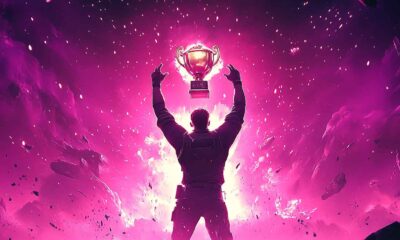
 Featured5 months ago
Featured5 months agoThe Ultimate UEFN Guide (2025) – Unreal Editor for Fortnite Explained
-
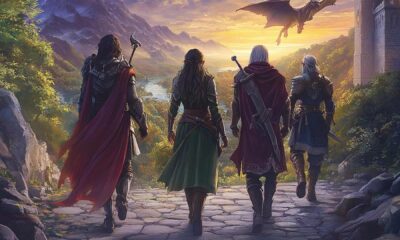
 All9 months ago
All9 months agoGame Development Grants to Boost Your Project in 2025
-
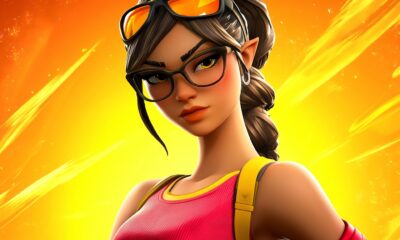
 All4 months ago
All4 months agoHow to Join the Fortnite Island Creator Program (Step-by-Step Guide)
-

 All5 months ago
All5 months agoUEFN Monetization Guide: How to Make Money with Unreal Editor for Fortnite
-
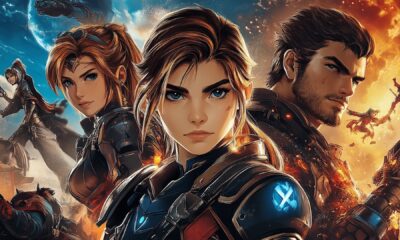
 All5 months ago
All5 months agoUnity 2025 Roadmap: Massive Performance Gains, Multiplayer Evolution & AI-Powered Creation
-

 All7 months ago
All7 months agoEngagement Payout Estimates Now Available in Fortnite Creator Portal
-

 All5 months ago
All5 months agoQuick Look at the UEFN Fortnite Creator Trello Roadmap: Key Updates and Community Impact
-

 All5 months ago
All5 months agoNew Content & Interview Policy: What Contributors and Readers Need to Know







